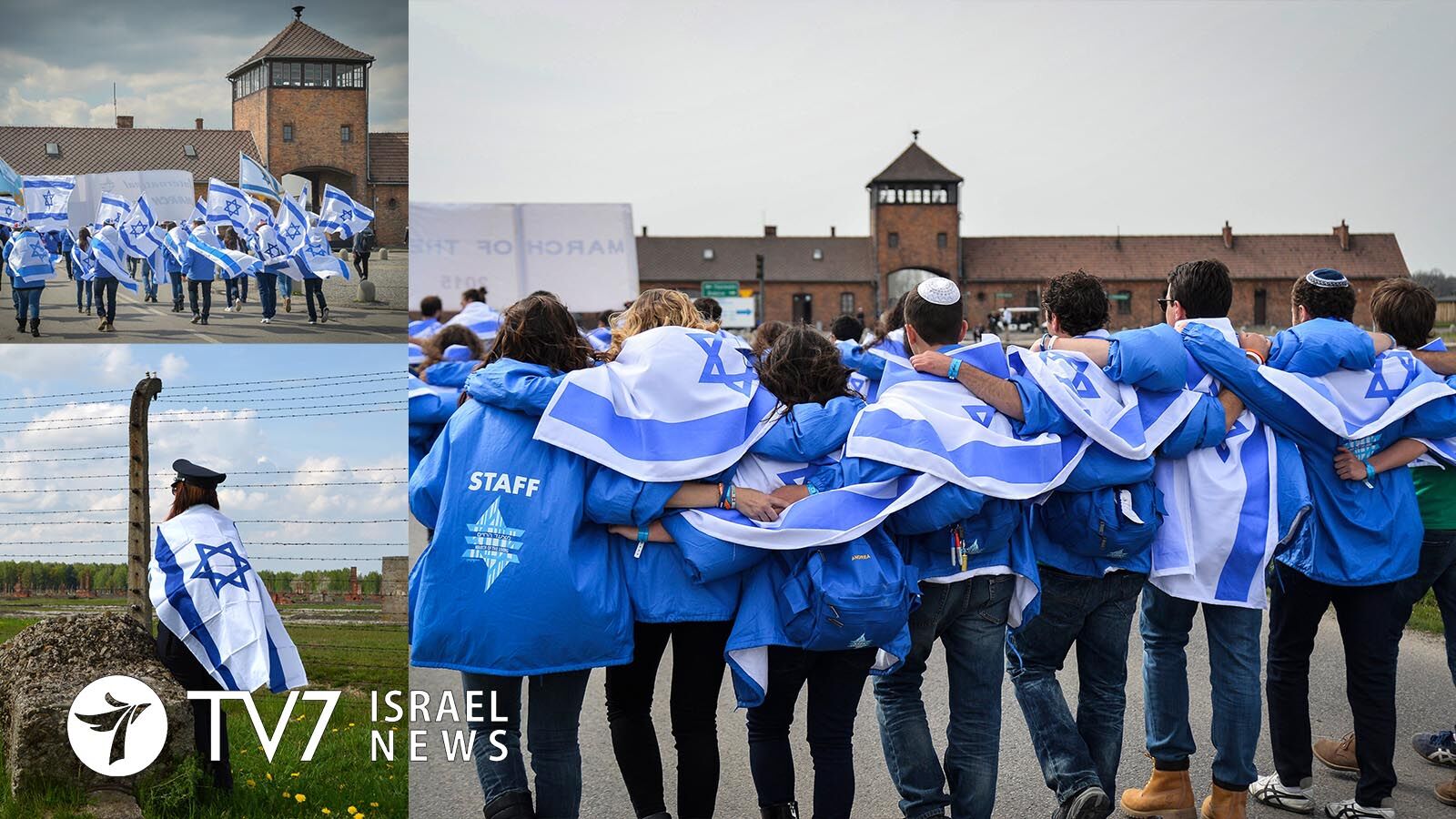The annual March of the Living is held on Israel’s Holocaust Martyrs’ and Heroes Remembrance Day of mourning for the victims of the genocide.
By Erin Viner
10,000 people from all over the world participated in this year’s commemorative walk across the grounds of the most notorious former Nazi concentration camp complex, where 1.1 million inmates were murdered. The majority of the victims were Jews, but also included Poles, Roma, Soviet prisoners of war and others.
Nearly 50% of the 3 million Jews living in Poland before WWII were among those murdered by the Nazis and their collaborators. Many of the Third Reich’s most heinous concentration camps were built in Poland after its 1939 occupation by Germany.
At least six million were killed by the Nazis and their collaborators during the Holocaust, of whom 1.5 million were children.
Israel organizes annual pilgrimages by Israeli 11th and 12th graders to sites in Poland to study the Holocaust and memorialize six million Jews killed during World War Two.
March of the Living President Phyllis Greenberg Heideman stressed the urgency for young participants to preserve the eyewitness testimony of the aging survivors, saying, “They will be the voice of those who no longer have voice once they see and understand what happened in the past.”
On this year’s march, 40 Jewish Holocaust survivors and their children led youth, dignitaries and delegations from multiple nations and Jewish communities from the infamous gate Auschwitz gate, engraved with the deceptive Nazi slogan “Arbeit Macht Frei” (“Work Sets You Free” in German). They then followed along train tracks on the 3.2-kilometer route to the gas chambers through the Auschwitz II-Birkenau gatehouse – one of the most recognizable landmarks at the site.
The 35th March of the Living was also held in celebration of Israel’s 75th anniversary of independence, and many marchers were draped in flags of the only Jewish State that was founded just three years after the end of the Second World War.
The theme of year’s event, taking place on the eve of the 80th anniversary of the outbreak of the Warsaw Ghetto Uprising, was the honoring of Jewish heroism by the brave souls who fought the Germans and their collaborators in the ghettos, extermination camps and the forests. The Ghetto Uprising carried out the largest single revolt by Jews during WWII, and served as inspiration for others to fight for their lives across Nazi-occupied Europe.
Many of the participants have joined previous marches, while others were joining for the first time. 22 members of an Arab delegation marched alongside Zionist Christians from Korea and many others during this year’s event.
“An Arab proverb says that seeing what happens on the spot is better than listening to what is said about what happened there. For this reason, nothing beats a visit to a place of memory that is universal in scope,” commented History Professor Mohammed Hatimi of the Sidi Mohamed Ben Abdellah University in Fez. “To be present at Auschwitz and to participate in the march is an intense event that reinforces the conviction that I must do my best to teach about the Holocaust and to learn from it. We all need such a pilgrimage for our own education, but also to pay tribute to the millions of victims of human horror, horror caused by radicalism taken to the extreme,” he added.
Also present was HE Ahmed Al Mansoori of the United Arab Emirates, who founded and is Chairman of the Crossroads of Civilization Museum, the first Holocaust exhibition in the Muslim and Arab world. The UAE will become the first Arab state to introduce Holocaust education in its official curriculum, starting in January 2024.
A somber ceremony was held in Birkenau after the conclusion of the March.
Six torches were lighted in memory of the six million Jews who perished in the Holocaust, with the seventh in celebration of Israel’s rebirth as a nation. Haim Taib, whose Tunisia-born father and grandfather survived the Holocaust, lighted the first ever torch dedicated to North African victims. Thousands of Jews were held and died in concentration camps in Tunisia, Libya and Morocco.
Also lighting a torch was Chairman of the Board of Governors of the Jewish Agency for Israel, Mark Wilf. “When you come to a place like this, your perspective is realigned,” he said, observing, “You realize how bigotry, intolerance, racism, antisemitism and xenophobia, those types of things and words, can lead to horrors.”
Dozens of other dignitaries included Israeli Education Minister Yoav Kisch, Chief Ashkenazi Rabbi David Lau, United States Ambassador to Israel Thomas Nides and his predecessor, David Friedman.
